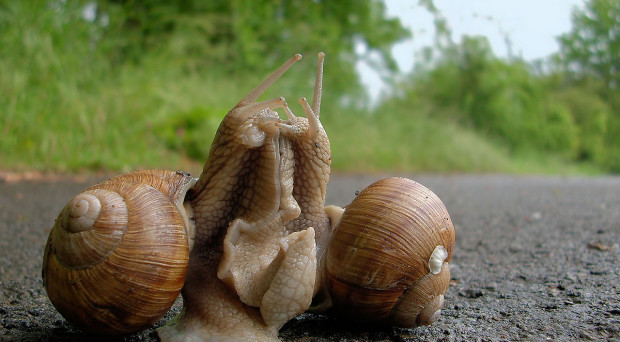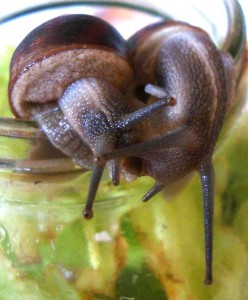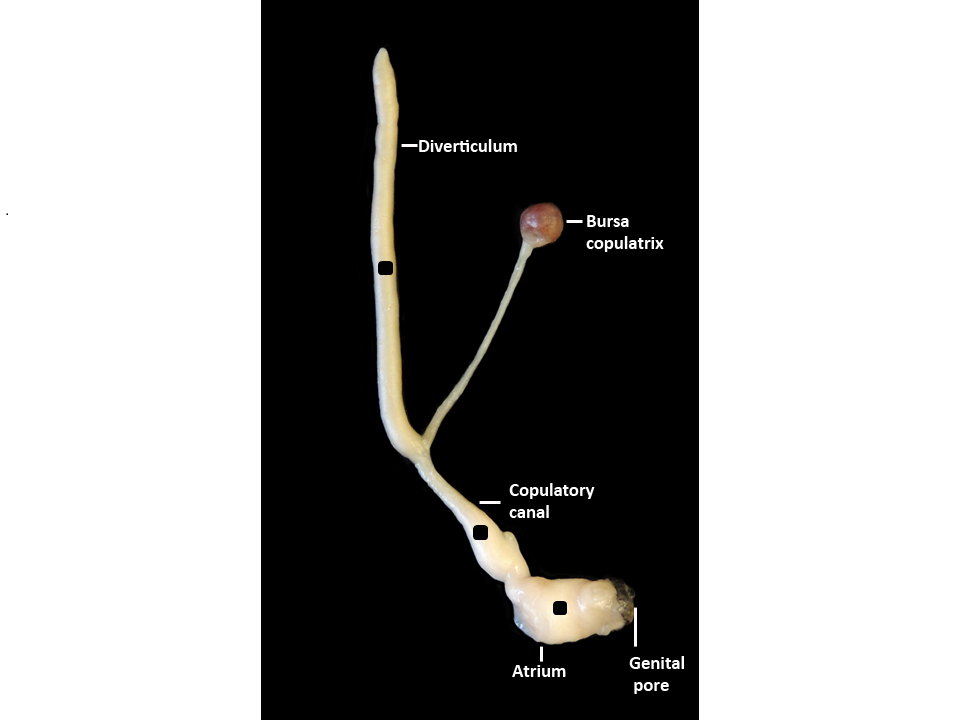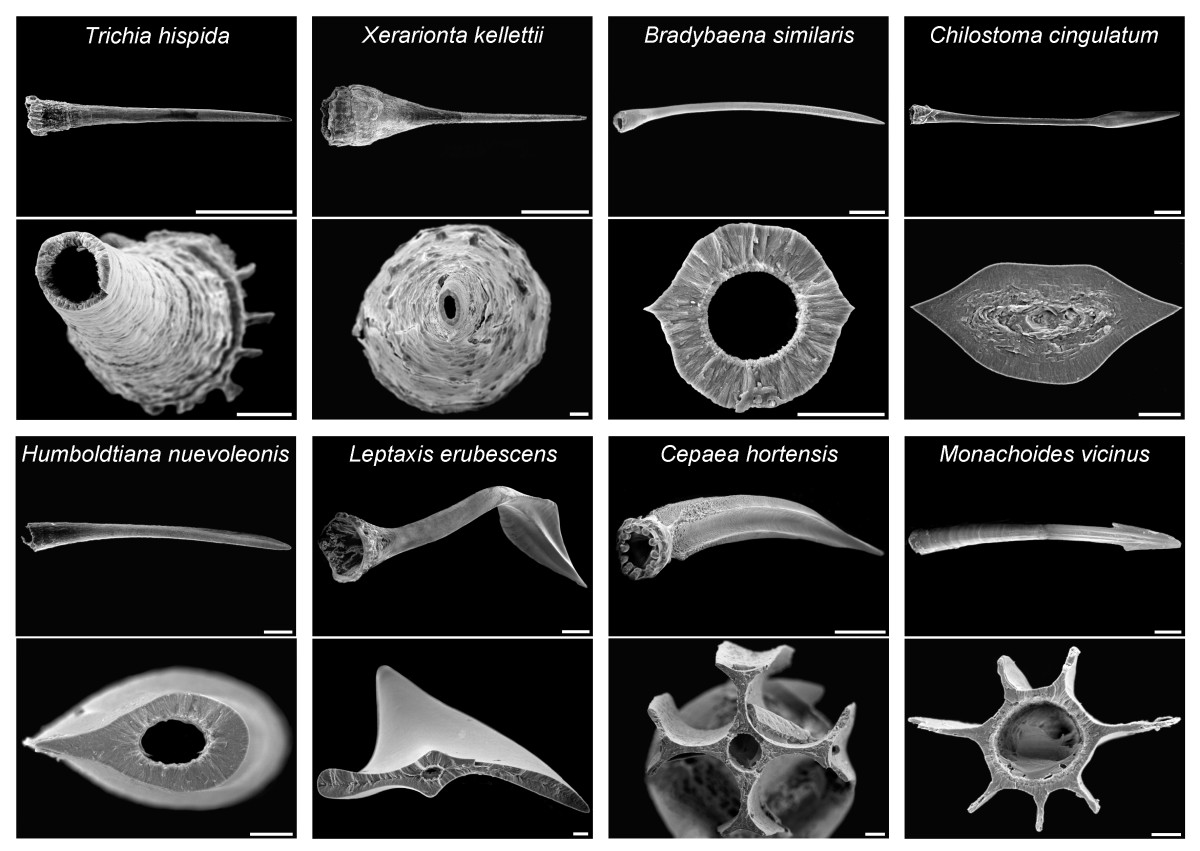
Love amongst snails
Spring has arrived in the UK, which for many of us means it’s time to attend to our gardens. Here the common garden snail might seem to be nothing more than a pest, and a fairly uninteresting one at that. Yet the behaviour of these apparently simple animals can be surprisingly complex.

Take their mating behavior for example. Garden snails (Cornu aspersum) are simultaneous hermaphrodites; that is, they possess both male and female genitalia at the same time. One might expect this would make sex a simple affair, both participants wanting to exchange sperm to fertilise their eggs. Yet snail mating is complex and fractious.
It begins as two snails approach each other and engage in an hours-long mating dance. During the dance each snail attempts to manoeuvre into position to fire its secret weapon in the mating game; a love-dart.
If the snail is successful, this dart – a sharp stylet of calcium carbonate – will be fired into the side of its mate, piercing its body wall. A snail’s love-dart is coated in mucus containing a cocktail of chemicals. Once these chemicals enter its mate’s blood stream they have a variety of affects, both physiological and behavioural, that increase the chances of the dart shooter’s sperm fertilising its mate’s eggs.
A chemical romance
To better understand the love dart’s effects we need to examine the snail’s reproductive system (see accompanying figure). Sperm enters via a long tunnel known as the diverticulum. Sperm has to pass through here to reach the copulatory canal, from where it can make it to the atrium and sperm storage organ and have a chance of fertilising the eggs. However, sperm in the copulatory canal can also be sucked into the bursa copulatrix and digested, leaving no chance of fertilisation.

This sets up a mating conflict. Snails can mate multiple times, with several different ‘fathers’ fertilising each snail’s eggs. During mating, the sperm donor wants as much of their sperm as possible to reach the sperm storage organ to maximise the number of eggs they fertilise. For the sperm recipient however, it may be beneficial to have their eggs fertilised by multiple males. As such, they may not want all of their mate’s sperm to reach their eggs and will be happy for much of it to be lost in the diverticulum or digested in the bursa copulatrix.
A successfully deployed love dart moves the scales in favour of the sperm donor. The chemicals contained in the dart mucus increase the number of contractions in the diverticulum (assumed to make uptake of sperm easier) and causes contractions in the copulatory canal, reducing access to the bursa copulatrix entrance and making sperm less likely to be digested. All of this means that successful use of a love-dart by the sperm donor more than doubles its paternity of its mate’s eggs.
In a Japanese snail, the (curiously named) sought-after false hadra (Euhadra quaesita), the love-dart has also been found to cause behavioural changes in mates, reducing their willingness to remate with other snails and so increasing the likelihood of the dart using snail’s sperm fertilising their eggs. At present, it is not clear how widespread such behavioural love-dart effects are in other snails, such as the garden snail.
The video below (from Lodil & Koene 2016) shows the reaction of the snail reproductive system to the mucus taken from a love-dart.
https://www.youtube.com/watch?v=XjLpEnLgJ4o&feature=youtu.be
A common mating strategy?
Much of the previous research on the role of love-darts in snail mating took place in the lab of Joris Koene at Vrije Universiteit Amsterdam in Holland. In new work, published today in BMC Evolutionary Biology, Koene’s group further elucidates the mechanism through which the love dart has its affects.
A considerable number of snail species, many close relatives of the garden snail, utilise love darts. The researchers aimed to determine if the love darts of these species, differing quite substantially in morphology (see figure), all work in the same way physiologically.
In a series of experiments, they injected mucus taken from the love darts of seven different snail species into the dissected reproductive tracts of garden snails. By videoing the reaction – in terms of number and intensity of contractions in the diverticulum and copulatory canal – they were able to determine if mucus from the varying species all had the same effect as mucus from the garden snail itself.
In general, it did; similar patterns of contractions were seen in each of the cross-species tests, especially in the copulatory canal. This supports the idea that these snail species use a common strategy of chemical manipulation with their love darts (although it’s possible the actual chemical compositions differ while producing broadly the same effects).

A snail’s pace arms race
What differences there were in response to the mucus of different snail species occurred in the diverticulum. These variations seem to be linked to variations in the presence and size of this organ in different snail species.
For example, love-dart mucus from F. fruticum, which does not possess a diverticulum, had a relatively small effect on the garden snail diverticulum. Similarly small effects were seen when the garden snail diverticulum was tested with the mucus of four other snail species that possess a short diverticulum.
This supports the idea that the diverticulum has evolved as a defense against the manipulative effects of love-darts on sperm uptake in the copulatory canal. A longer diverticulum guards against this by increasing the number of contractions needed for sperm to make it to the copulatory canal. In turn, species with long diverticulums (like garden snails) have evolved an increasingly potent love-dart mucus as a counter-measure.
Snails appear to be locked in an on-going arms race; males improving the potency of their love darts, females improving their defences against this tactic. An arms race which is made all the stranger by each individual snail being both male and female, attacker and defender, at the same time. Those snails eating your plants are living more complex lives than we might have imagined…
Comments